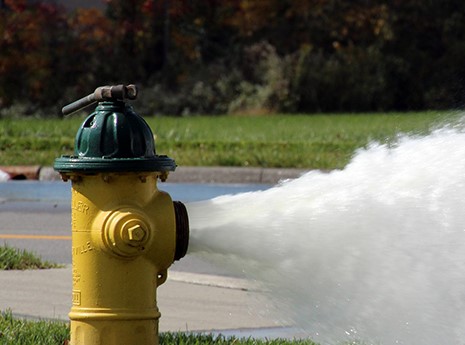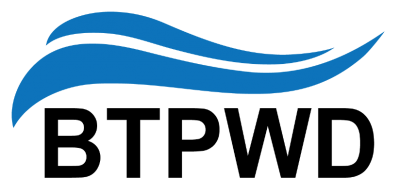
Water flowing from opened flushing hydrants allows any sediment and stagnant water to be removed from the distribution system and also provides an opportunity to test the operability of the hydrant.
During flushing, water may become temporarily discolored and customers should avoid washing clothes until the water has cleared. These steps are taken to improve the overall water quality within the distribution system and to ensure the delivery of the highest quality water possible.
Hydrant flushing occurs twice a year, in the spring and the fall. Approximate dates for Fall 2025 flushing are provided below. Also below are some frequently asked questions.
Flushing will begin Tuesday, October 21st
Fall 2025 Flushing Schedule


Hydrant Flushing Facts and Frequently Asked Questions
Why does the District perform hydrant flushing?
Flushing is the quick release of water from hydrants. It’s a controlled procedure that is vital to the general maintenance of the District's water distribution system. It ensures adequate water flow is available to residents and businesses. It also helps maintain the District's water clarity and quality by clearing iron and mineral deposits from the water mains (distribution pipes).
What are the effects of hydrant flushing?
Flushing helps ensure water quality and helps avoid random bouts of rusty water if there is a high demand for water, such as a major firefighting effort or high usage during a sustained drought.
Sometimes hydrant flushing can make the water temporarily appear rust-colored because the iron and mineral deposits in the water get stirred up.
Why is my water rust/tea-colored from the hydrant flushing? Is the water safe?
Sometimes hydrant flushing can make the water temporarily appear rust-colored because the iron and mineral deposits in the water get stirred up. Water is safe to use and consume during hydrant flushing, however it may stain laundry.
The main component of the discoloration of the water during hydrant flushing is caused by iron deposits from inside the water mains. The source of the iron is naturally occurring in the water as well as from deposits in the ductile iron pipe that make up the portions of the underground water system. The District purchases its water from the City of Bloomington who monitor and remove iron at their Lake Bloomington Treatment Plant.
How come my water is discolored, but my neighbor didn’t notice any discoloration?
If you were home when the flushing was going on and you turned on your water, you’re water may be discolored because you are drawing in the water as the District is flushing it and stirring up the minerals and iron.
If your neighbors were not home all day and returned home in the evening and turned on their tap when no flushing was occurring, they most likely will not notice any discoloration.
My water is discolored. What should I do?
Wait until flushing has subsided in your area then run the cold water tap until the water runs clear.
If you have a water softener and are experiencing discolored water, place the unit into regeneration or cleaning mode after hydrant flushing is completed in your area.
Remember rust colored water is safe, but it may stain laundry. If this happens, keep clothes wet and treat them with stain remover.
How often is hydrant flushing done?
Hydrant flushing is performed two times a year—once in the spring and once in the fall.
Tips for Minimizing Water Discoloration during Hydrant Flushing Operations
- If possible, limit your water use.
- Wait until flushing has subsided in your area then run the cold water tap until the water runs clear.
- If have a water softener and are experiencing discolored water, place the unit into regeneration or cleaning mode after hydrant flushing is completed in your area.
- Remember rust colored water is safe, but it may stain laundry. If this happens, keep clothes wet and treat them with stain remover.

